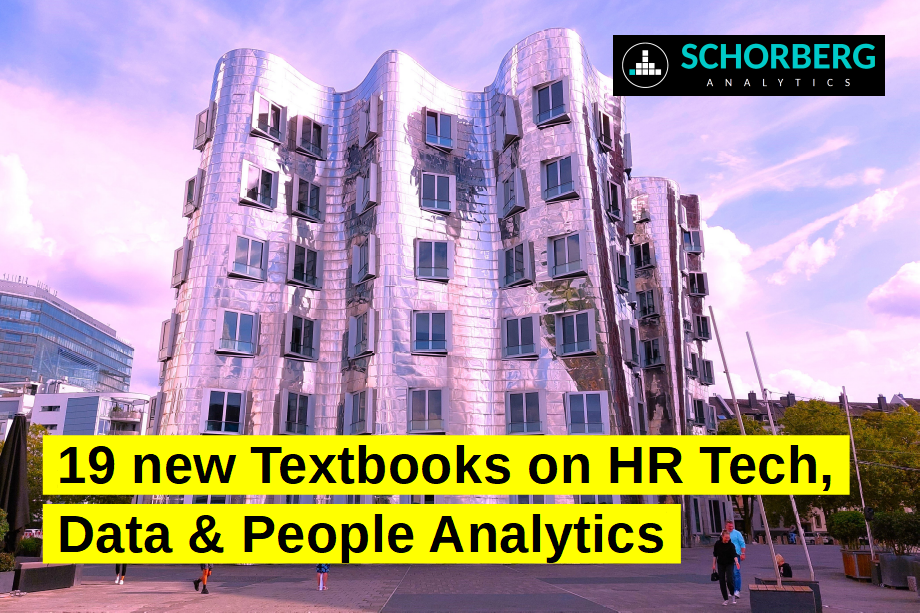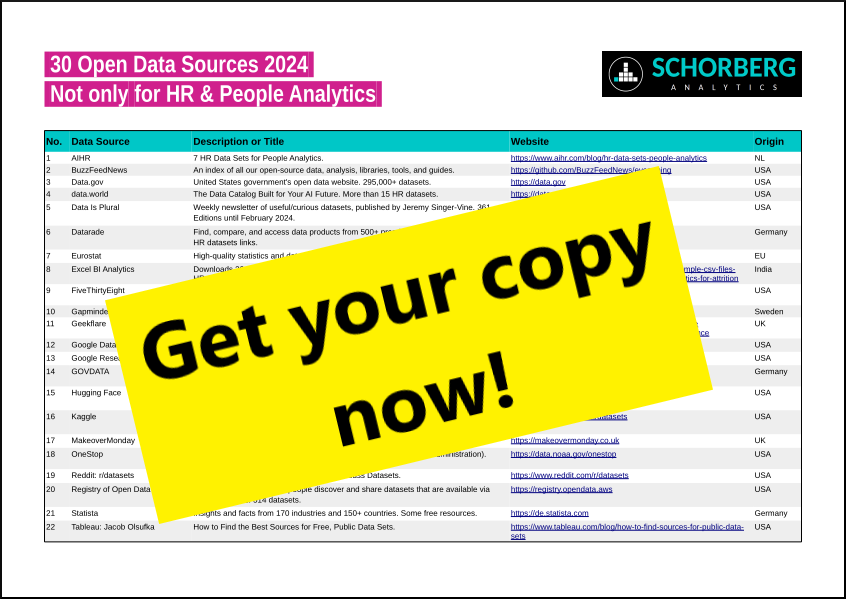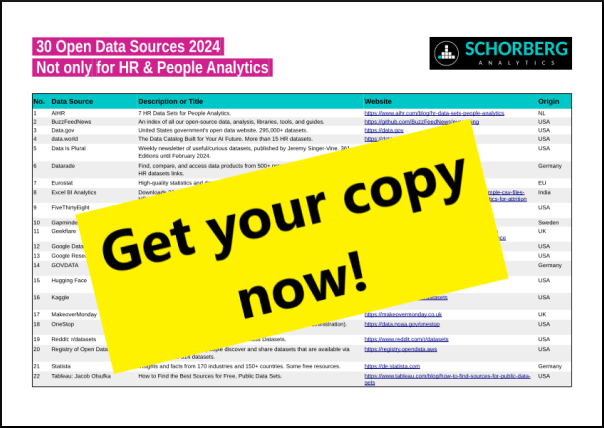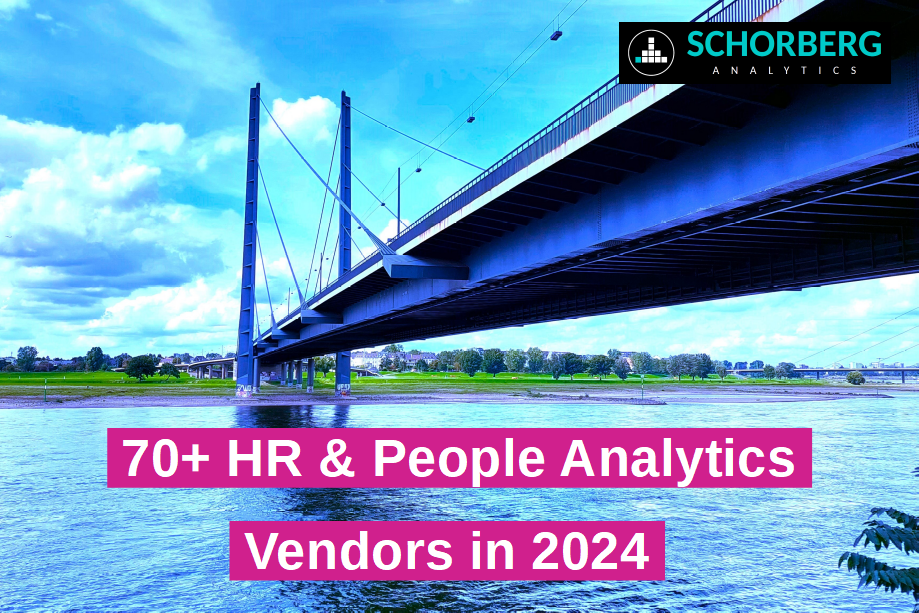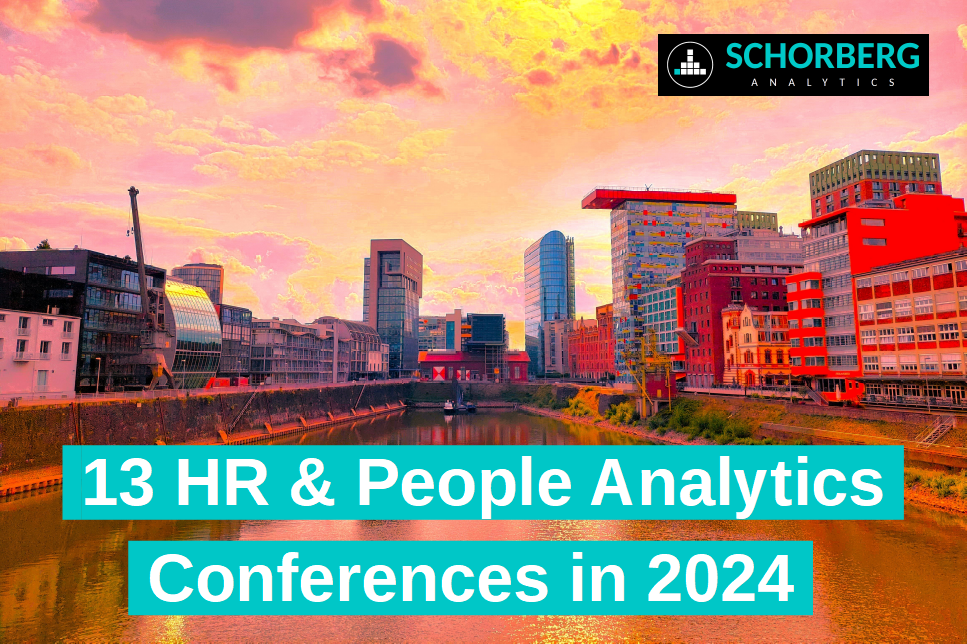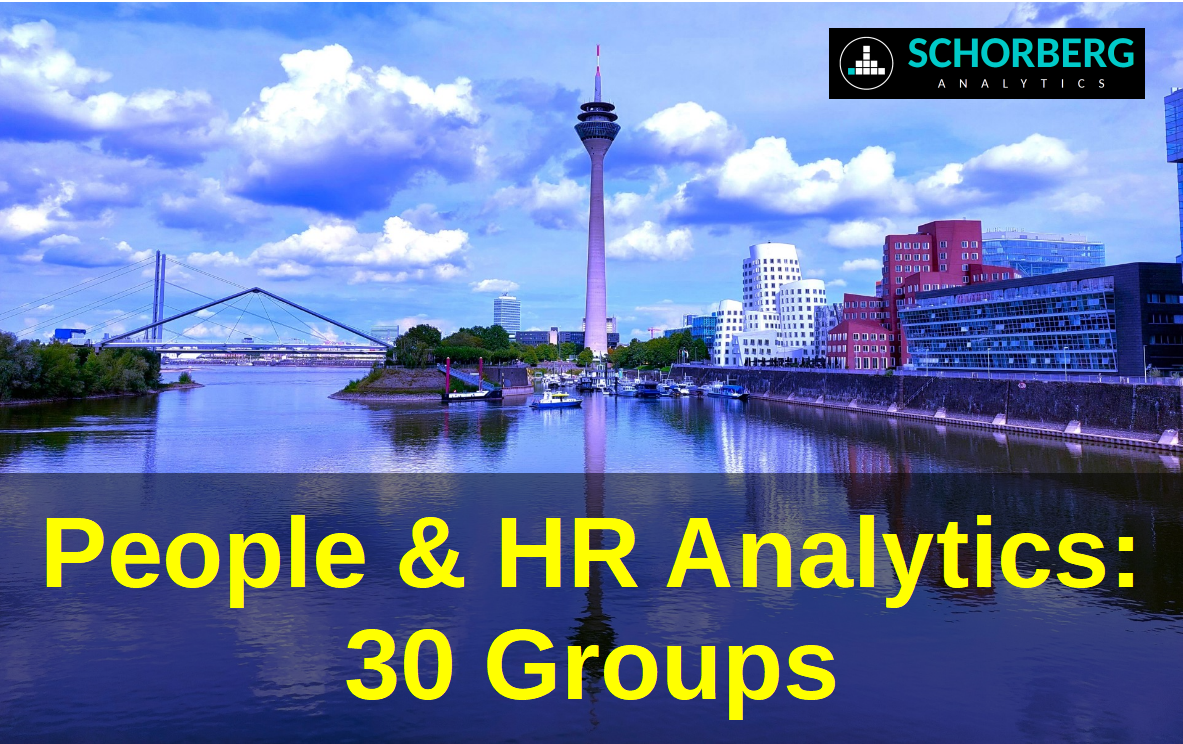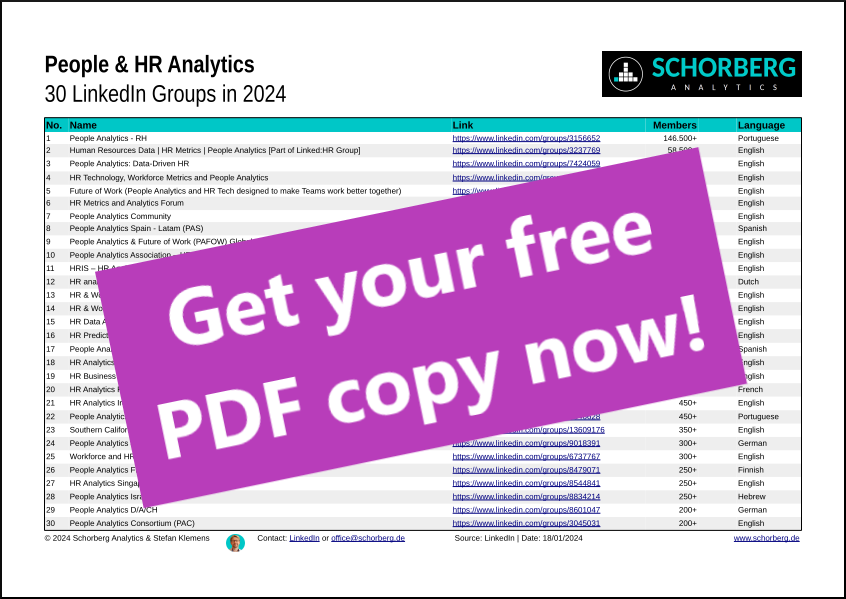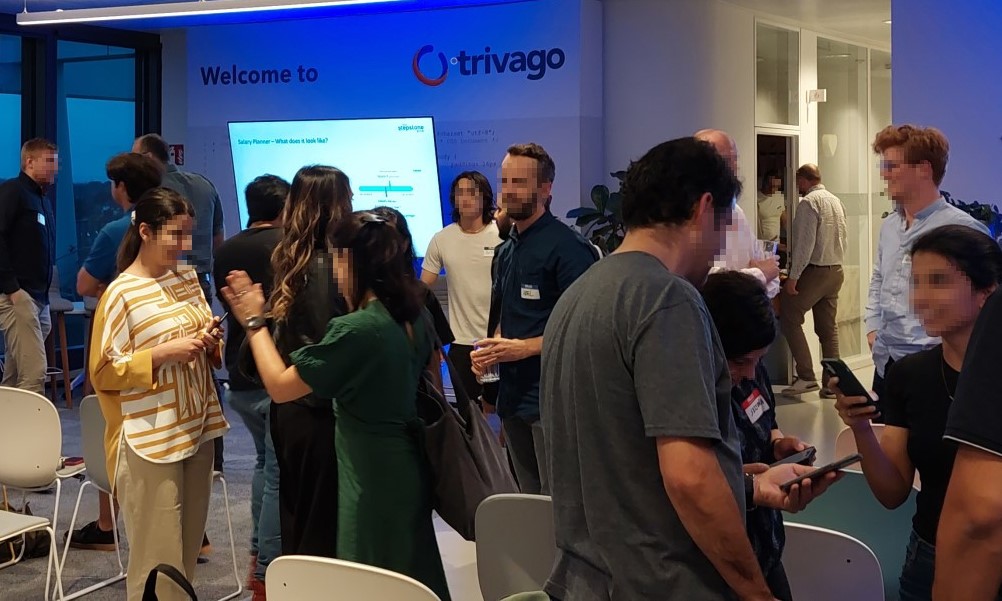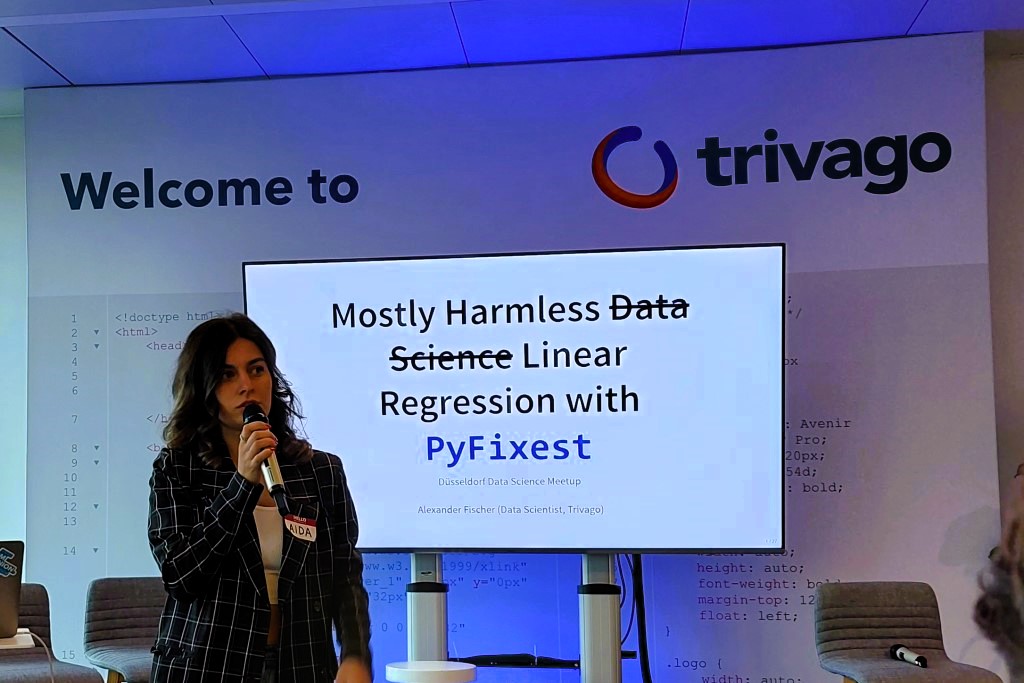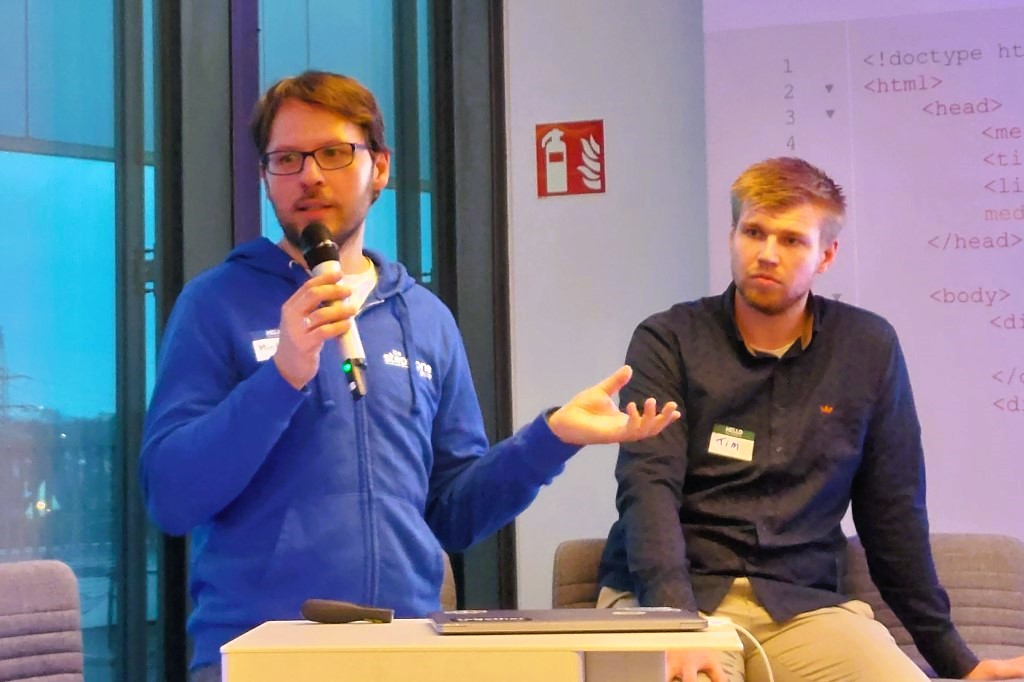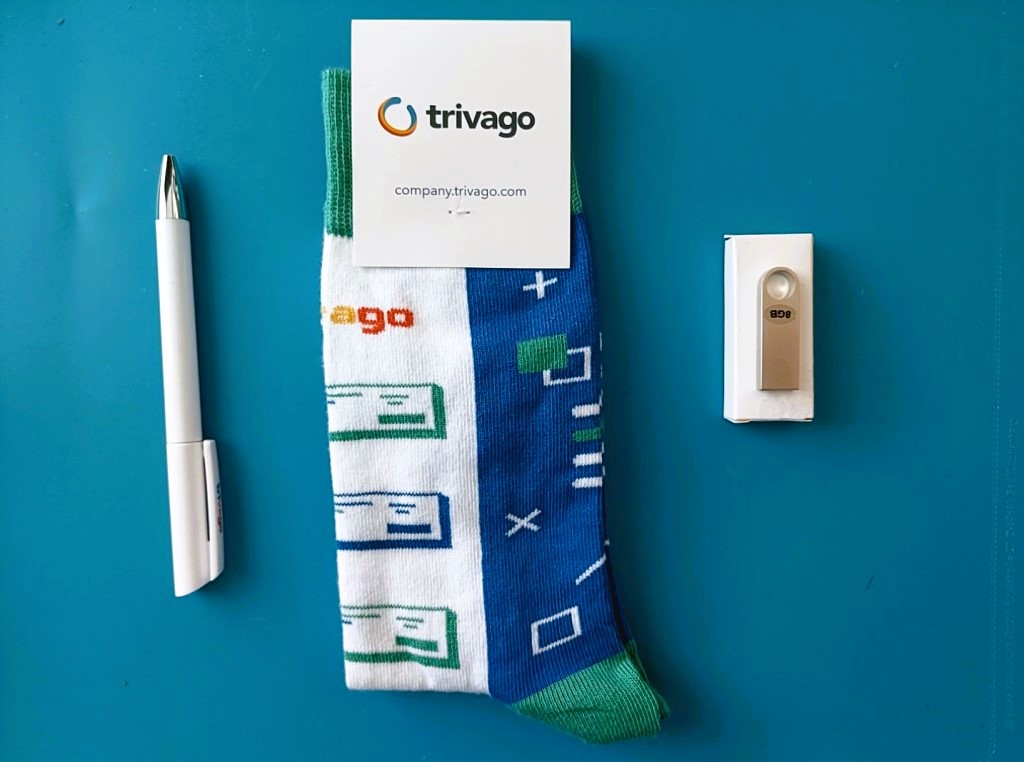Dear visitor!
As you know the speed of the world has increased dramatically and the world wide web and the smart phone were important drivers for it.
Technology has also established itself as you know human resources management althought a little time later than in marketing for example. But HR tech or digital HR are not new in organizations anymore, and People Analytics as you may no has established itself as a cross-function in at least big organizations (more or less HR data science).
To keep up with developments in HR tech and HR & People Analytics and get inpiration for your work it is a good idea to exlore the book market from time to time. This I have done these days for you and me: I have collected in this newblog article 15 new books that cover these hot HR topics and which were published since June 2023.
Please note: The list is ordered by publication date (day-month-year) backwards; Translations into English with deepl.com; Images are embedded from their original source; If no remark in the note regardin a work all textbooks are published as first editions.
And: I will write some words or maybe a review like this about one or more of the selected works in the future. So stay tuned and connect with me on LinkedIn or contact me to keep in touch. Can’t wait? Then take a look on my previous newsblogs article with more cool HR tech stuff.
Let’s start!
#1:
Data-Driven Talent Management

Basic information:
Author: Kristin Saling
Publication date: 03/08/2024 (Kogan Page), 27/08/2024 (amazon.de)
Publisher: Kogan Page
Language: English
Pages: 288
Price (print): 31.99 Euro (Paperback), 95.00 GBP (Hardback)
Website: https://www.koganpage.com/hr-learning-development/data-driven-talent-management-9781398615786
Note: A table of content is available online on the website. Kogan Page will be publish the textbook in August 2024 according to their website.
About the author:
Kristin Saling is Director at the Innovation Cell for the United States Army Human Resources Command where she enables the command to capitalize on the latest HR business practices and technologies.
See also this article about the unit: https://potomacofficersclub.com/news/us-army-using-data-ai-to-improve-workforce-management/
Source: Publisher; Web search
#2:
Predictive HR Analytics: Mastering the HR Metric
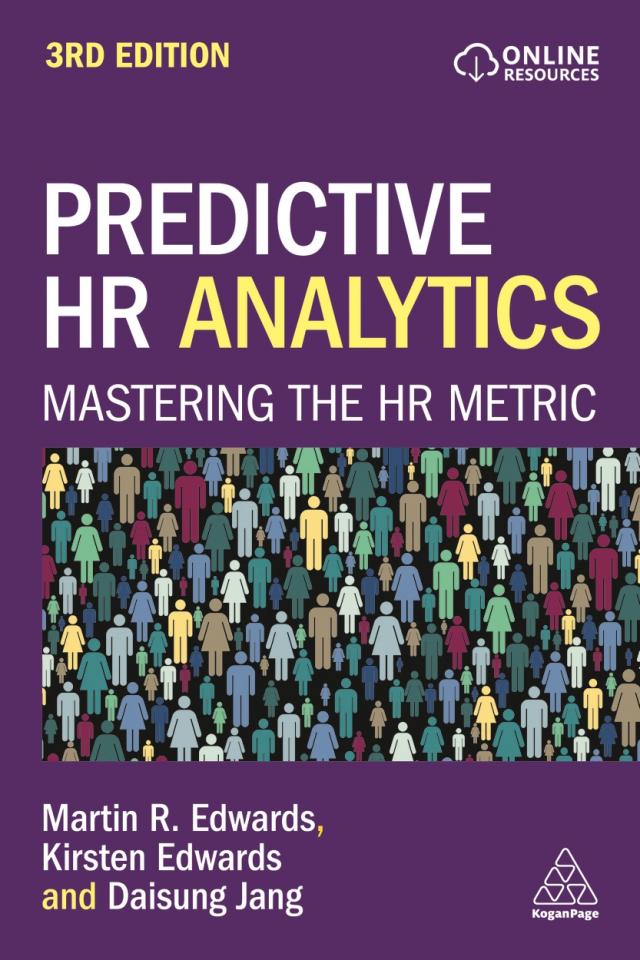
Basic information:
Author: Daisung Jang, Martin Edwards, Kirsten Edwards
Publication date: 25/06/2024
Publisher: Kogan Page
Language: English
Pages: 536
Price (print): 50.50 Euro (Paperback), 170.86 GBP (Hardback)
Website: https://www.koganpage.com/hr-learning-development/predictive-hr-analytics-9781398615656
Note: A table of content is available online on the website. Kogan Page will be publish the textbook as the third edition in June 2024 according to their website.
About the authors:
“Martin R Edwards is an Associate Professor in Management at UQ Business School, University Queensland, Australia.
Kirsten Edwards is HR Lead for Advanced Analytics and Data Science at Rio Tinto and has over 20 years’ broad international experience in analytics, HR and management consulting, based in Queensland, Australia.
Daisung Jang has over 10 years’ experience of data analysis and is an expert on R. He is a lecturer in UQ Business School, University of Queensland, Australia.”
Source: Publisher
#3:
Creepy Analytics: Avoid Crossing the Line and Establish Ethical HR Analytics for Smarter Workforce Decisions

Basic information:
Author: Salvatore V. Falletta
Publication date: 23/02/2024
Publisher: McGraw-Hill Professional
Language: English
Pages: 288
Price (print): 29.29 Euro
Website: https://www.mhprofessional.com/creepy-analytics-avoid-crossing-the-line-and-establish-ethical-hr-analytics-for-smarter-workforce-9781265132675-usa
Note: Neither a book preview on the website is available, nor on Google Books. McGraw-Hill’s publishing date is shortly in one week as we read on its internet page.
About the author:
“Dr. Salvatore Falletta is a director and professor of Human Resource Leadership and Organizational Science at Drexel University. […] As a former chief human resources officer, head of Global HR Research and Analytics at a Fortune 100, and thought leader on this subject, Salvatore Falletta has witnessed first-hand the emergence of “creepy analytics” as a hot-button issue.”
Source: Publisher
#4:
HR Tech Strategy: Revolutionizing Employee Experience Through HR-Tech Synergy
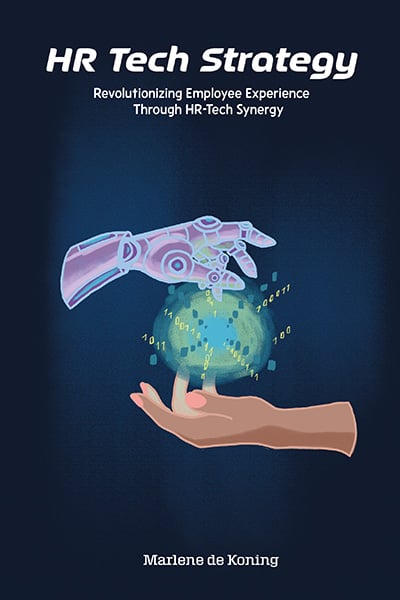
Basic information:
Author: Marlene de Koning
Publication date: 30/01/2024
Publisher: Business Expert Press
Language: English
Pages: 214
Price (print): 34.92 Euro / 34.99 USD
Website: https://www.businessexpertpress.com/books/hr-tech-strategy-revolutionizing-employee-experience-through-hr-tech-synergy
Note: A Book preview from the title until page 23 plus “About the Author” and the back cover is available on the website.
About the author:
“Marlene de Koning is a director of HR Tech & Data at PwC, where she leads a team of HR tech and data specialists, who help clients drive workforce transformation, create data driven strategies and implement innovative technologies.”
Source: Publisher
#5:
Human Resource Management: People, Data, and Analytics
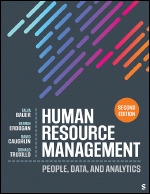
Basic information:
Authors: Talya Bauer, Berrin Erdogan, David Caughlin, Donald Truxillo
Publication date: 19/01/2024
Publisher: Sage Publications
Language: English
Pages: 600
Price (print): 125.68 Euro (Loose-leaf), 157.39 Euro (Paperback)
Website: https://us.sagepub.com/en-us/nam/human-resource-management/book274799
Note: A table of contents of this second edition is available online on the website.
About the authors:
You can find detailed information about the authors on the website.
#6:
Recruiting Analytics: Mehr Erfolg mit Data Driven Recruiting und Talent Intelligence
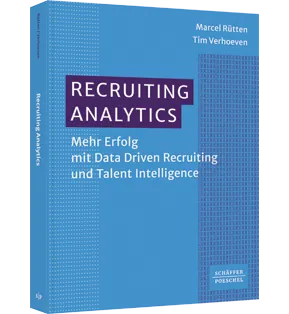
Basic information:
Authors: Marcel Rütten, Tim Verhoeven
Publication date: 02/01/2024
Publisher: Schäffer-Poeschel (part of Haufe Group)
Language: German
Pages: 168
Price (print): 49.99 Euro
Website: https://shop.haufe.de/prod/recruiting-analytics
Note: The table of contents of the book is available online and as a PDF on the website.
About the authors:
“Marcel Rütten has been working in HR management for over 15 years and is a widely known HR and recruiting expert as Global Talent Acquisition Lead, HR blogger and author. […]”
Source: Publisher
https://hr4good.com/marcel-ruetten
“Tim Verhoeven heads the Talent Intelligence team at Indeed in the DACH region and previously managed recruiting and personnel marketing at an international management consultancy. […]”
Source: Publisher

